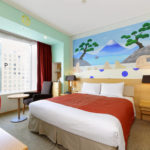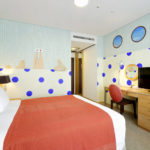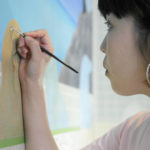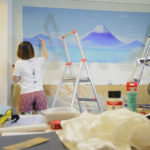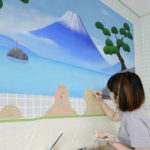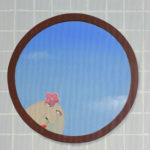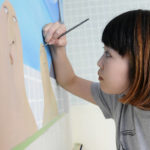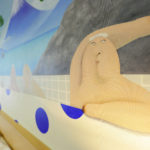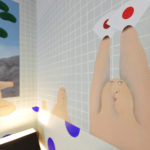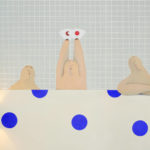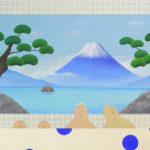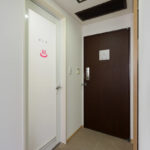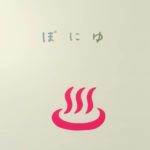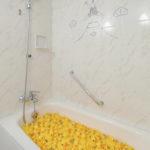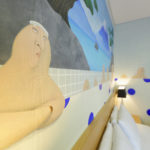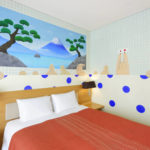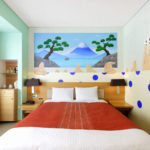Close
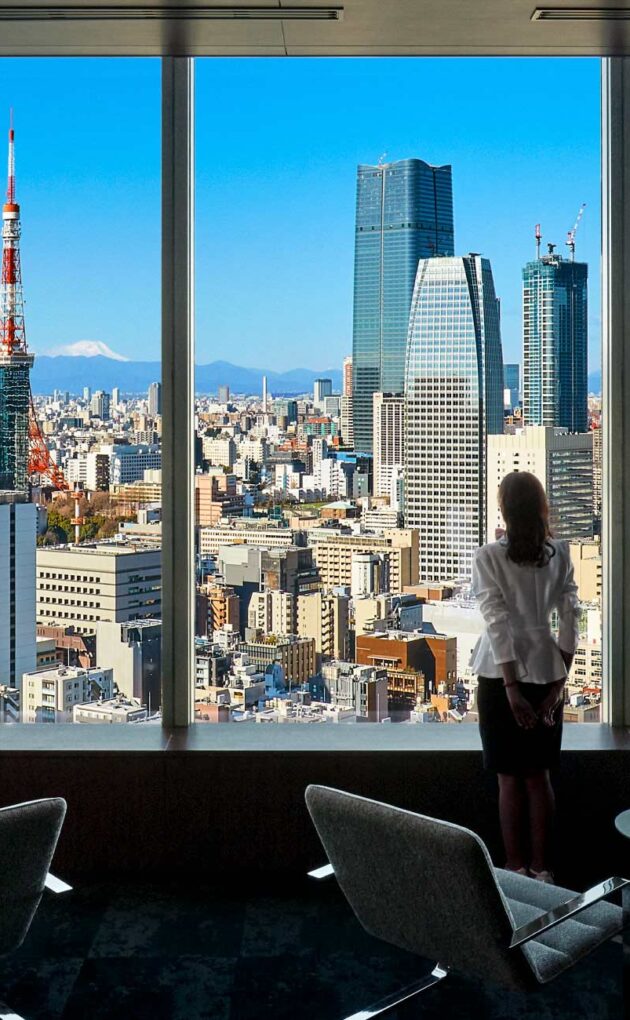

The 11th Wave of this project, “Sento”, was started by the modern artist Keiko Migita on 7 August, and completed on 1st September.
On the headboard, a painting of Mount Fuji and pine trees. On the wall, the mosaic looks like tiles, but this is also a picture. This painting, which makes you feel like you’re actually inside a “sento” (Japanese bathhouse), surrounds you. Migita chose the theme of “sento” as her motif because it’s part of the “austere, daily life of the Japanese people”. She wanted to create a room where you could relax body and mind in the easy-going atmosphere of a Japanese bathhouse. And the characters painted there are the fictitious people called PONI (dwellers) which always appear in her work. The painting shows these dwellers, who might be foreign guests or space travelers, enjoying Japanese culture.
We hope you too will come and experience the “Sento Artist’s Room” – a rather extraordinary artwork you can actually live in.
Staff recommendation comment
Have you ever visited a public bathhouse in Japan?
I don’t have a lot of experience, so I decided to research about Japanese bathhouses.
The origin of public bathhouses dates back to the 6th century, when Buddhist missionary workers founded bathhouses for the general public. Public bathhouses became widely accepted among commoners during the Edo period (1603-1868) where they transformed into social gathering places. In modern times, bathhouses are considered as a necessary part of daily life for hygienic reasons. Bathhouse fees are reasonable and you get a chance to socialize with Japanese people during your stay in Japan. In other words, bathing is a way to get to know and experience “authentic” Japan.
However, if you are embarrassed to take a bath with strangers, I recommend you to stay in our “public bathhouse” room. This bedroom features Mt. Fuji which is famously depicted in public bathhouses. Another feature is a charming original character called “Poni,” representing Japanese old men. There are also many rubber duck friends in the bathroom and they are looking forward to taking a bath with you. This room shows the artist’s playful mind because there are not so many rooms that have artworks and toys together in the bathroom.
This room is recommended for those who want to experience the atmosphere of a public bathhouse and enjoy their bath time as much as they did in their childhood. Of course, your children can enjoy this room with you too!
Room #3120 | Completion Date: September 2014
Thermae Tokyo “PONI-yu”
In Japan, there is a bath culture. It’s not only a place where you wash your body, but also where you relax your mind. I think of hot springs as special, but the local bathhouse is a public place, and rather than being something fancy, it’s a place where you can just go and be yourself. Japanese people are shy, but they all get in the water together with strangers they’ve never seen before and don’t know, and come home spiritually refreshed. That’s why it’s both interesting, and wonderful.
It’s a culture that’s part of a simple daily life which continues to this day. I chose the Japanese bath as my motif in order to reappraise it. I thought it would be nice for guests to relax body and mind surrounded by the scene of a public bathhouse where you can unwind. I hope you enjoy the Japanese “sento”, or public bathhouse, through my world, PONI.
Keiko Migita
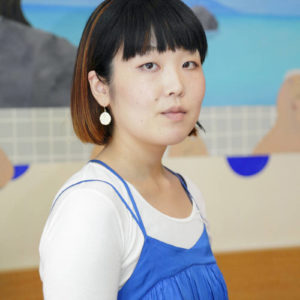
Born 1983 in Kumamoto.
Specialized in Printmaking at Tama Art University Graduate School, Fine-Arts Graduate Course
